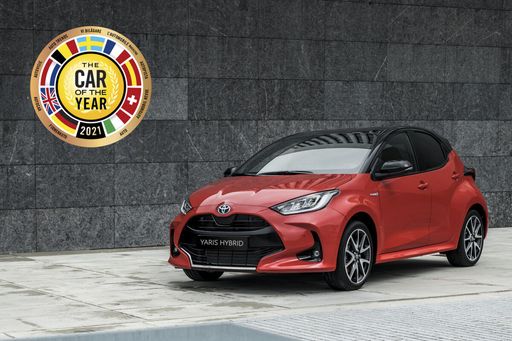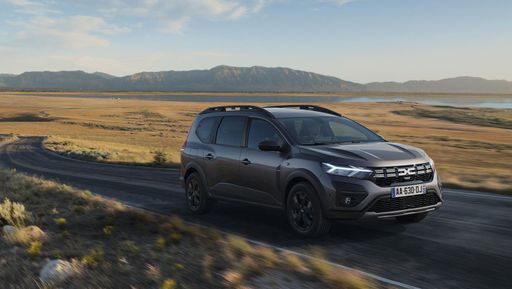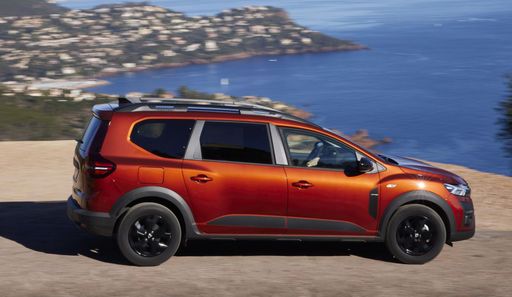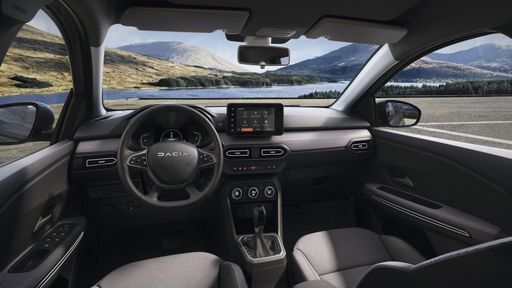Dacia Jogger vs Toyota Yaris – Performance, range & efficiency compared
Compare performance, boot capacity, efficiency and price at a glance.
Find out which car is the better choice for you – Dacia Jogger or Toyota Yaris?
Costs and Efficiency:
Price and efficiency are key factors when choosing a car – and this is often where the real differences emerge.
Dacia Jogger has a decisively advantage in terms of price – it starts at 15400 £, while the Toyota Yaris costs 21900 £. That’s a price difference of around 6437 £.
Fuel consumption also shows a difference: Toyota Yaris manages with 3.80 L and is therefore distinct more efficient than the Dacia Jogger with 4.70 L. The difference is about 0.90 L per 100 km.
Engine and Performance:
Under the bonnet, it becomes clear which model is tuned for sportiness and which one takes the lead when you hit the accelerator.
When it comes to engine power, the Toyota Yaris has a convincingly edge – offering 280 HP compared to 140 HP. That’s roughly 140 HP more horsepower.
In acceleration from 0 to 100 km/h, the Toyota Yaris is decisively quicker – completing the sprint in 5.50 s, while the Dacia Jogger takes 9.80 s. That’s about 4.30 s faster.
In terms of top speed, the Toyota Yaris performs clearly perceptible better – reaching 230 km/h, while the Dacia Jogger tops out at 174 km/h. The difference is around 56 km/h.
There’s also a difference in torque: Toyota Yaris pulls clearly stronger with 390 Nm compared to 200 Nm. That’s about 190 Nm difference.
Space and Everyday Use:
Beyond pure performance, interior space and usability matter most in daily life. This is where you see which car is more practical and versatile.
Seats: Dacia Jogger offers distinct more seating capacity – 7 vs 5.
In curb weight, Toyota Yaris is slightly lighter – 1090 kg compared to 1251 kg. The difference is around 161 kg.
In terms of boot space, the Dacia Jogger offers significantly more room – 607 L compared to 286 L. That’s a difference of about 321 L.
In maximum load capacity, the Dacia Jogger performs clearly better – up to 1819 L, which is about 884 L more than the Toyota Yaris.
When it comes to payload, Dacia Jogger slight takes the win – 582 kg compared to 525 kg. That’s a difference of about 57 kg.
Who comes out on top?
Overall, the Toyota Yaris shows itself to be leaves the rival little chance and secures the title of DriveDuel Champion.
It convinces with the more balanced overall package and proves to be the more versatile choice for everyday use.

Toyota Yaris
Dacia Jogger
The Dacia Jogger offers a spacious and versatile interior, making it an excellent choice for families seeking practicality and comfort. Its design combines the robustness of an SUV with the functionality of an estate, providing a reliable option for various driving needs. With a focus on affordability, the Jogger ensures that essential features are accessible without compromising on quality.
details @ dacia-presse.de
@ dacia-presse.de
 @ dacia-presse.de
@ dacia-presse.de
 @ dacia-presse.de
@ dacia-presse.de
 @ dacia-presse.de
@ dacia-presse.de
Toyota Yaris
The Toyota Yaris exudes a charming blend of practicality and style, making it an appealing choice for urban drivers. Its compact design allows for easy manoeuvrability in crowded city streets, while the interior offers a surprisingly spacious and comfortable environment. With a focus on fuel efficiency and reliability, the Yaris remains a popular option for those seeking a balance between performance and economy.
details @ Toyota
@ Toyota
 @ Toyota
@ Toyota

|

|
|
|
|
Costs and Consumption |
|
|---|---|
|
Price
15400 - 23400 £
|
Price
21900 - 46700 £
|
|
Consumption L/100km
4.7 - 7.8 L
|
Consumption L/100km
3.8 - 9.5 L
|
|
Consumption kWh/100km
-
|
Consumption kWh/100km
-
|
|
Electric Range
-
|
Electric Range
-
|
|
Battery Capacity
0.60 kWh
|
Battery Capacity
-
|
|
co2
105 - 137 g/km
|
co2
87 - 215 g/km
|
|
Fuel tank capacity
40 - 50 L
|
Fuel tank capacity
36 - 50 L
|
Dimensions and Body |
|
|---|---|
|
Body Type
MPV
|
Body Type
Hatchback
|
|
Seats
5 - 7
|
Seats
4 - 5
|
|
Doors
5
|
Doors
3 - 5
|
|
Curb weight
1251 - 1460 kg
|
Curb weight
1090 - 1356 kg
|
|
Trunk capacity
160 - 607 L
|
Trunk capacity
141 - 286 L
|
|
Length
4547 mm
|
Length
3940 - 3995 mm
|
|
Width
1784 mm
|
Width
1745 - 1805 mm
|
|
Height
1674 mm
|
Height
1455 - 1500 mm
|
|
Max trunk capacity
1807 - 1819 L
|
Max trunk capacity
935 L
|
|
Payload
393 - 582 kg
|
Payload
289 - 525 kg
|
Engine and Performance |
|
|---|---|
|
Engine Type
Full Hybrid, LPG, Petrol
|
Engine Type
Full Hybrid, Petrol
|
|
Transmission
Automatic, Manuel
|
Transmission
Automatic, Manuel
|
|
Transmission Detail
Automatic Gearbox, Manual Gearbox
|
Transmission Detail
CVT, Manual Gearbox, Automatic Gearbox
|
|
Drive Type
Front-Wheel Drive
|
Drive Type
Front-Wheel Drive, All-Wheel Drive
|
|
Power HP
91 - 140 HP
|
Power HP
116 - 280 HP
|
|
Acceleration 0-100km/h
9.8 - 13.2 s
|
Acceleration 0-100km/h
5.5 - 9.7 s
|
|
Max Speed
167 - 174 km/h
|
Max Speed
175 - 230 km/h
|
|
Torque
160 - 200 Nm
|
Torque
390 Nm
|
|
Number of Cylinders
3 - 4
|
Number of Cylinders
3
|
|
Power kW
67 - 103 kW
|
Power kW
85 - 206 kW
|
|
Engine capacity
999 - 1598 cm3
|
Engine capacity
1490 - 1618 cm3
|
General |
|
|---|---|
|
Model Year
2024 - 2025
|
Model Year
2024 - 2025
|
|
CO2 Efficiency Class
C, D
|
CO2 Efficiency Class
B, G
|
|
Brand
Dacia
|
Brand
Toyota
|
What drivetrain options does the Dacia Jogger have?
The Dacia Jogger is offered with Front-Wheel Drive.
The prices and data displayed are estimates based on German list prices and may vary by country. This information is not legally binding.
